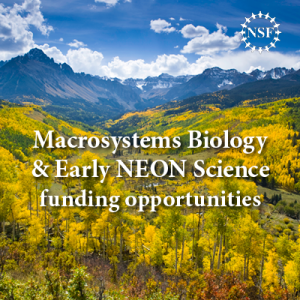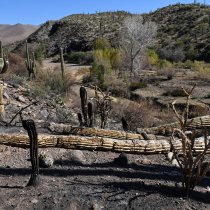NSF Announces Macrosystems Biology and Early NEON Science research funding opportunities
January 11, 2016
The National Science Foundation (NSF) recently announced the MacroSystems Biology and Early NEON Science: Research on Biological Systems at Regional to Continental Scales program. This program solicits proposals that “address the scales where the ecological research challenges are the greatest and where research has the greatest potential to transform the field of ecology by addressing issues that have long hindered development of large-scale ecological research.”
NSF will make three categories of awards, including Early Career Awards (ECA), Full Research Awards (FRA), and Early NEON Science Awards (ENSA). Full proposal deadlines are March 15 and October 17, 2016.
According to the NSF, this program is designed to support funding opportunities that “will support quantitative, interdisciplinary, systems-oriented research on biosphere processes and their complex interactions with climate, land use, and invasive species at regional to continental scales as well as planning, training, and development activities to enable groups to conduct MacroSystems Biology and Early NEON Science research.”
NEON resources to support researchers
If you are interested in submitting a proposal utilizing NEON, we encourage you to explore the NEON website for information that can help researchers prepare their proposals including:
-
Information for Researchers: provides additional information to principal investigators and a point of contact at NEON to address questions and provide letters of support
-
Data Product Catalog: provides a searchable list of NEON data products.
-
Airborne Data: provides information on available airborne data and how to request these data.
-
Get Specimens and Samples: provides information about the specimens and samples that NEON collects, how they complement automated measurements and observations on the ground, and how to request them.
Have questions?
If you have questions about NEON field sites, collection methods, data products, infrastructure, etc. or need a letter of support, please review Information for Researchers and/or contact NEON via email so we may direct your inquiry to the most appropriate person.



